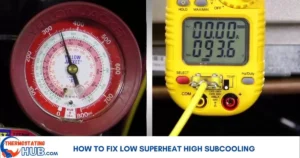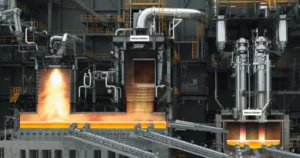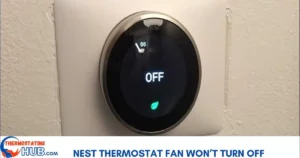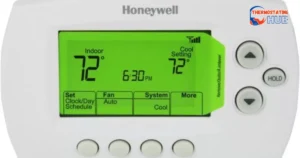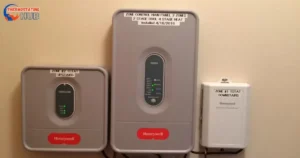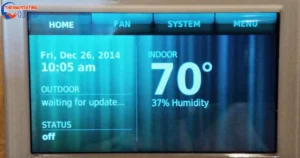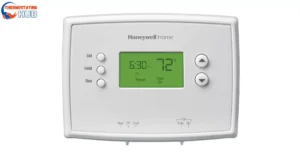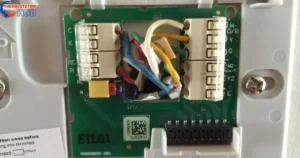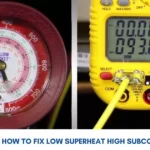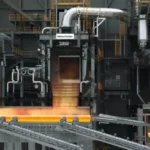Exploring the Bryant Furnace Code 33 signals an open limit or flame rollout switch. This happens when the furnace overheats due to inadequate airflow or exclusive operation in high-heat mode.
The blower persists for 4 minutes or until the switch resets, opting for a longer duration. If the switch stays open beyond 3 minutes, it shifts to lockout code 13. Conversely, if the switch stays open for under 3 minutes, status code 33 persists until the blower deactivates.
Address code 33 promptly. Ensure proper airflow and adjust furnace mode. Persistent issues may need professional help to avoid lockout code 13, ensuring optimal performance. Regular maintenance prevents glitches, keeping your system smooth.
Common Causes For Bryant Furnace Code 33
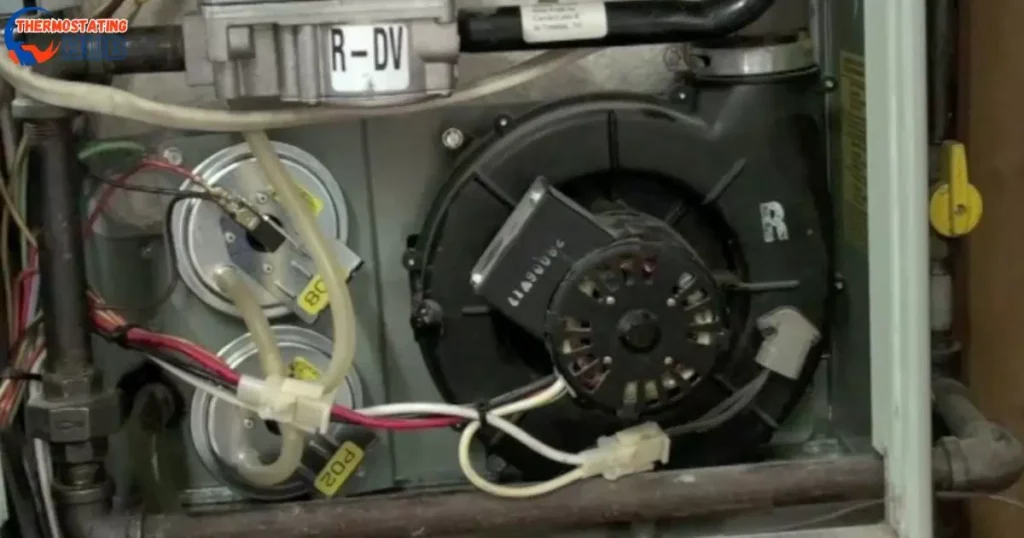
| Issue | Solution |
| A clogged filter or airflow restrictions | Replace the filter |
| Blocked vents or grilles | Open obstructed vents |
| Unstable blower wheel | Tighten the blower wheel |
| Faulty blower motor or capacitor | Swap out the capacitor or blower motor |
| Malfunctioning Limit Switch | Install a new limit switch |
Closed Vents/Grilles or Registers
If too many vents or grilles are closed or blocked, it hinders the escape of hot air, increasing pressure on the furnace and leading to overheating.
Make sure you keep enough vents open. Also, check for any objects like furniture, rugs, or mats that might be blocking the vents.
Another potential cause of air restriction in the ductwork could be pinched or twisted ducts. Inspect your ducts for abnormalities, such as twisted or pinched sections, that could impede the flow of hot air.
As an HVAC expert, it’s crucial to emphasize regular maintenance to avoid issues like overheating. Ensure proper ventilation by keeping vents unblocked and inspecting ductwork for any restrictions. These simple checks are necessary to ensure efficient furnace performance and potential damage. Stay proactive to enjoy a comfortable and trouble-free heating system.
Defective blower or capacitor
If the blower motor or capacitor isn’t working correctly, it can cause heating problems in the furnace, causing status code 33 to kick in.
The furnace blower does its job by pulling air from the return vent and pushing out warm air through the ductwork, spreading comfort across your home.
A malfunctioning blower means no hot air circulation, leading to overheating. Consequently, the limit switch is activated, addressing the issue.
Inefficient blower performance not only impacts heating but also strains other components. Regular maintenance can prevent such issues, ensuring a cozy home . Don’t overlook the importance of timely inspections to keep your furnace running smoothly.
Troubleshooting A Blower Motor And Capacitor:
If your blower motor is acting up, the fix is a replacement with a working unit. Remember to switch out the motor capacitor, too, as it tends to act up over time.
To troubleshoot, start by checking the capacitor. It stores the juice needed for the motor to kick in. Grab a multimeter to test its continuity.
If the capacitor checks out, the problem might be with the blower motor. Give it a spin by hand; if it resists, the motor could be on the fritz.
A busted motor can get pretty hot when powered up, and you might notice some strange humming noises.
As an expert in HVAC systems, it’s crucial to address blower motor issues promptly. Neglecting these problems could lead to more extensive and costly repairs down the road. Regular maintenance, including checking capacitors and motors, ensures your system runs smoothly, keeping your indoor environment comfortable.
Remember, a stitch in time saves nine!
Dirty air filter
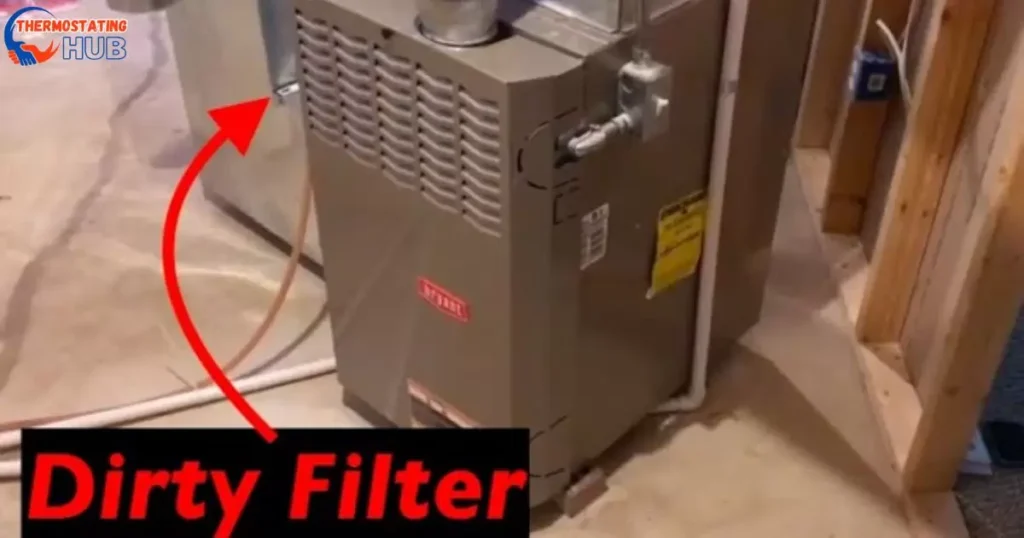
A common reason for Bryant furnaces showing code 33 is a dirty or clogged air filter. If your furnace is displaying this code, start by checking the air filter. Find it near the blower compartment and assess its condition.
If the filter looks dirty or it’s been more than 2 months since the last replacement, it’s a good idea to put in a new one.
A dirty air filter limits airflow, causing the furnace to overheat. This, in turn, can prevent the limit switch from closing, triggering code 33. Regularly replacing the air filter helps maintain proper airflow and prevents overheating issues.
As an expert recommendation, it’s crucial to make air filter checks and replacements a routine part of your furnace maintenance. Neglecting this simple task can lead to more severe issues, affecting both the efficiency and lifespan of your furnace.
Ensure you follow the manufacturer’s guidelines for filter replacement frequency to keep your heating system in optimal condition.
Defective limit switch
A limit switch is like the guardian of your furnace, stepping in to turn things off if the heat hits dangerous levels.
Just like anything else, though, it can wear out with time. This tiny safety device is made up of two different metals, and when things get too hot, it bends and breaks the circuit. If this happens a lot, it might get stuck in the open position, triggering a status code 33.
If you think your limit switch is stuck, give it a gentle nudge with a screwdriver or something similar. If that doesn’t do the trick, it might be time to swap out the whole limit switch assembly.
Being aware of your furnace’s limit switch and its potential issues is crucial for a safe and efficient heating system. Regular checks and prompt action can prevent bigger problems and ensure your home stays cozy during the chilly months. Don’t let a small switch cause a big headache!
Navigating Bryant Furnace Code 33: Unveiling the Pros and Cons
Code 33 on your Bryant furnace signals a potential issue with the limit switch, a crucial safety component. Let’s delve into the advantages and disadvantages of this situation.
| Pros | Cons |
| 1. Safety First: Code 33 indicates the limit switch is doing its job, shutting off the furnace to prevent overheating. | 1. Disruption: Your furnace is temporarily halted, leaving you without heat until the issue is resolved. |
| 2. Prevents Damage: By triggering the code, your furnace prevents potential damage from excessive heat. | 2. Underlying Issue: Code 33 may be a symptom of a deeper problem, such as a malfunctioning limit switch or overheating concerns. |
| 3. Alert System: Acts as an early warning system, prompting you to investigate the cause and avoid further complications. | 3. Inconvenience: Dealing with the code requires troubleshooting and potentially professional assistance. |
| 4. DIY Potential: Simple issues like a stuck limit switch can sometimes be resolved with basic troubleshooting. | 4. System Downtime: Resolving Code 33 may require a service call, causing downtime until the furnace is back in action. |
Unlocking Future Innovations in Bryant Furnace Code 33: What Lies Ahead?
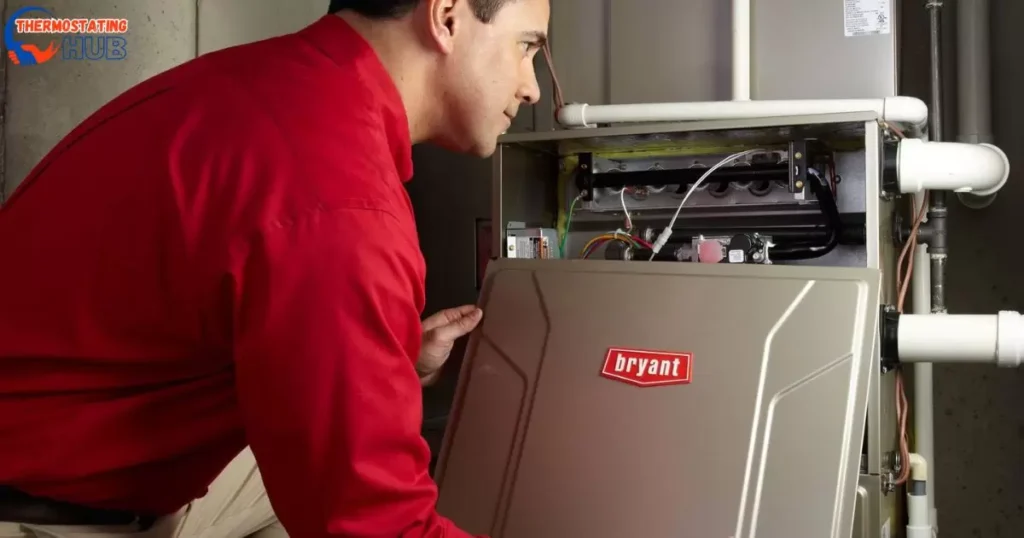
As we navigate the intricacies of Bryant Furnace Code 33, it’s crucial to explore potential future innovations in heating technology. The landscape is evolving, and advancements aim to enhance both user experience and system efficiency.
One promising avenue is the integration of smart technology. Imagine a furnace equipped with sensors and connectivity, capable of self-diagnosing issues leading to Code 33. This intelligent system could communicate directly with homeowners, providing real-time alerts and even suggesting DIY solutions.
Moreover, predictive maintenance could revolutionize how we address Code 33. Advanced algorithms analyzing furnace performance data may predict potential issues before they trigger a shutdown. This proactive approach allows for timely intervention, preventing unexpected disruptions and ensuring continuous comfort.
Efficiency is another focus for future innovations. Furnaces designed to optimize heat output while minimizing energy consumption could redefine the Code 33 scenario. Smart thermostats may collaborate seamlessly with furnaces, adjusting settings dynamically to prevent overheating and system strain.
Read Also: What Does Reco Mean On Thermostat?
Key Takeaways for Effectively Managing Bryant Furnace Code 33
- Safety First: Code 33 signals a vital safety feature – the limit switch – preventing furnace overheating.
- Prompt Action: Address the issue promptly to restore your heating system’s optimal performance.
- Underlying Problems: Code 33 may hint at deeper issues like a malfunctioning limit switch or overheating concerns; investigate accordingly.
- Early Warning System: Consider Code 33 as an alert system, prompting a timely investigation and preventing further complications.
- DIY Potential: Basic troubleshooting might resolve simple Code 33 issues, but professional assistance may be necessary for more complex cases.
- Preventing Downtime: Regular maintenance can help prevent Code 33 occurrences, ensuring a consistently warm home environment.
- Future Innovations: Keep an eye on advancements in smart technology and predictive maintenance for more efficient and user-friendly heating systems.
- Efficiency Matters: Look for furnaces designed to optimize heat output while minimizing energy consumption.
- Stay Informed: Stay vigilant and informed about the evolving landscape of heating technology for a proactive approach to Code 33 management. 👨🔧
Answers To Key Questions
How do I fix code 33 on my furnace?
A code 33 on a furnace often indicates a limit switch fault. Possible causes include a dirty air filter, blocked vents, or issues with the blower motor. Check and clean the air filter, ensure proper ventilation, and inspect the blower motor. If issues persist, consult a professional HVAC technician.
What is the 33 limit fault on a Carrier furnace?
A code 33 on a Carrier furnace signifies a limit switch problem. This could be due to factors like a dirty filter, blocked vents, or blower motor issues. Addressing these issues and ensuring proper airflow can help resolve the error. Professional assistance may be needed for a thorough inspection.
What is the code 3 long 3 short on a Bryant furnace?
A code 33 on a Bryant furnace, signified by 3 long and 3 short flashes, also indicates a limit switch fault. Similar to other furnaces, this may be caused by issues like a dirty air filter, blocked vents, or blower motor problems. Addressing these issues and seeking professional help if needed is recommended.
What causes limit circuit lockout?
Limit circuit lockout, indicated by furnace error codes like 33, is often caused by factors restricting proper airflow. This includes a dirty air filter, blocked vents, or malfunctioning components like the blower motor. Regular maintenance, cleaning, and professional inspection can help prevent and resolve limit circuit lockout issues.
Final Thoughts
Understanding and addressing Bryant Furnace Code 33 is crucial for maintaining a safe and efficient heating system. Whether dealing with a dirty air filter, blocked vents, a faulty blower or capacitor, or a defective limit switch, proactive measures can prevent disruptions and ensure your home stays comfortably warm.
Remember, Code 33 serves as both a safety feature and an alert system, signaling potential issues with the limit switch. Timely action, regular maintenance, and staying informed about future innovations in heating technology are key to effectively managing Code 33 and maintaining a reliable furnace.
Refer to the complete article for detailed insights and solutions tailored to your furnace’s needs. Happy heating, and stay warm with a well-maintained and efficient heating system! 🌟

I’m Matthew Porter, the HVAC enthusiast at thermostatinghub.com. Beyond being a writer, I’m your dedicated problem solver for all things heating and cooling. Join me on my blog for a storytelling adventure through the HVAC universe. Together, let’s transform your comfort challenges into tales of coziness!
![Bryant Furnace Code 33 [Solved]](https://thermostatinghub.com/wp-content/uploads/2023/12/bryant-furnace-code-33-solved.webp)



